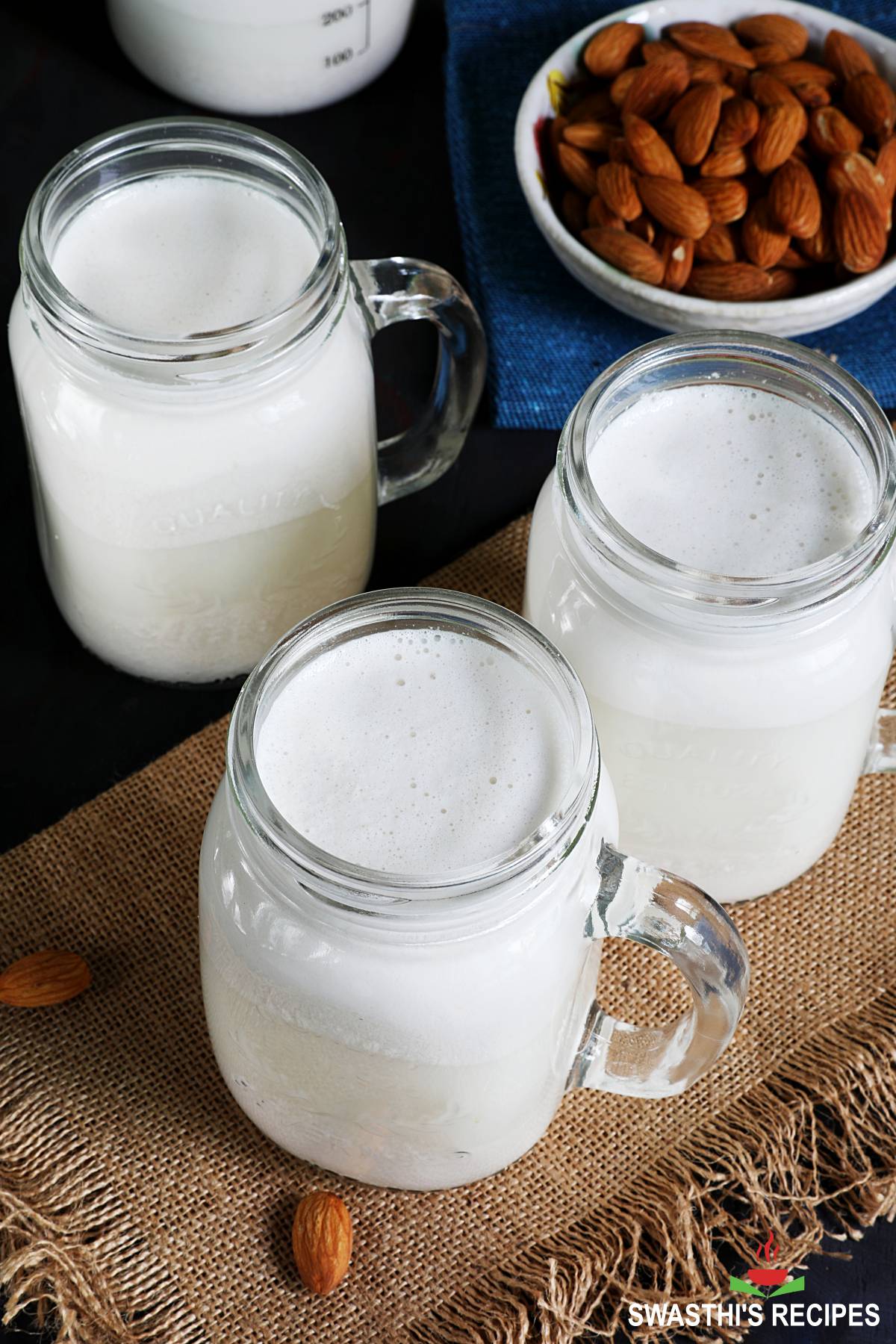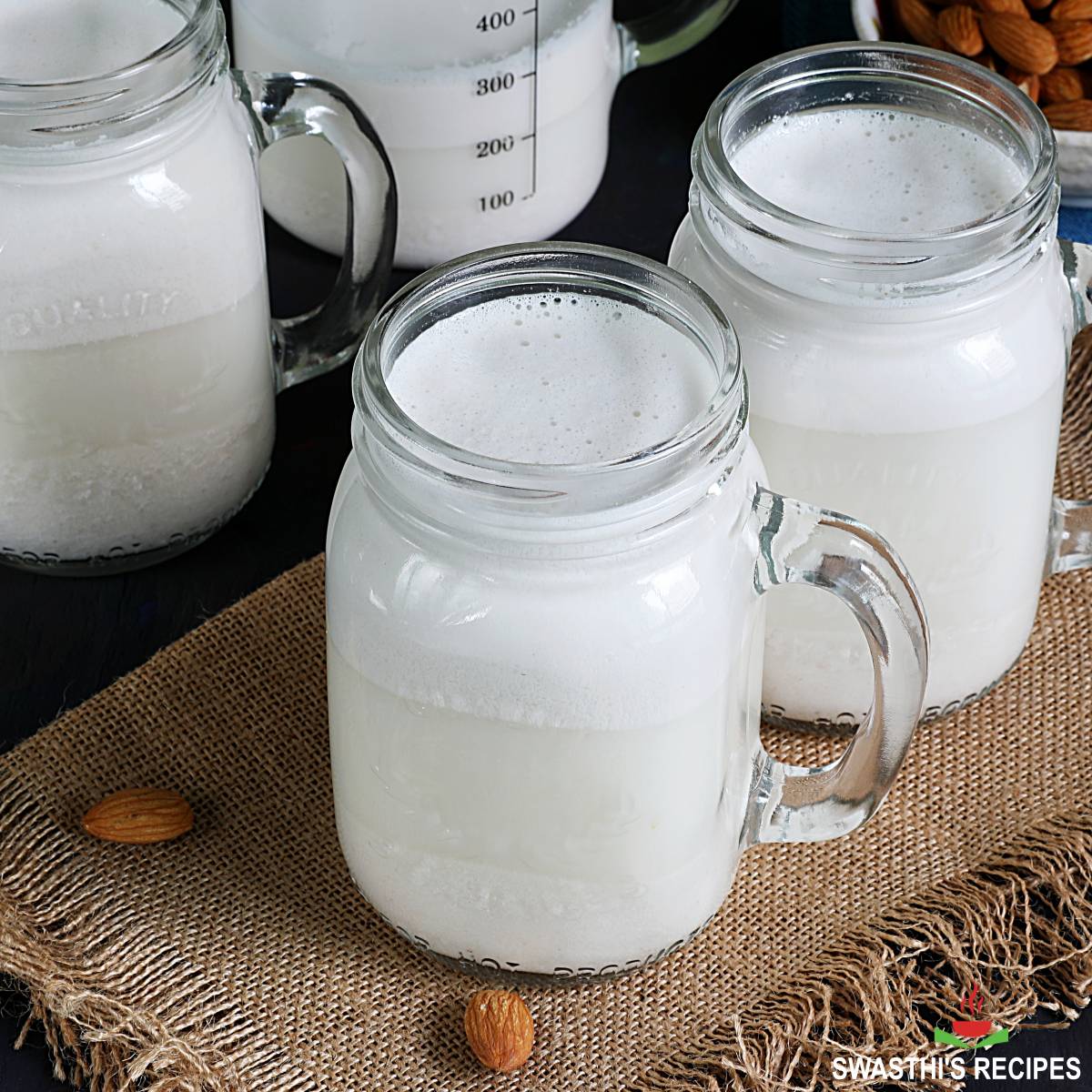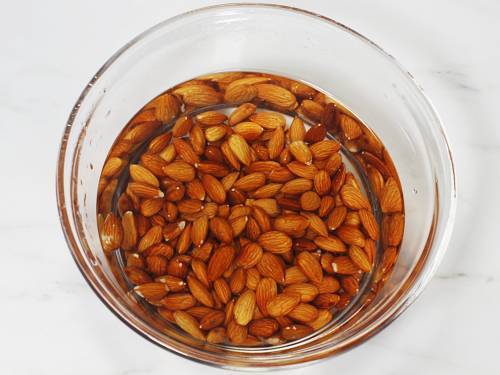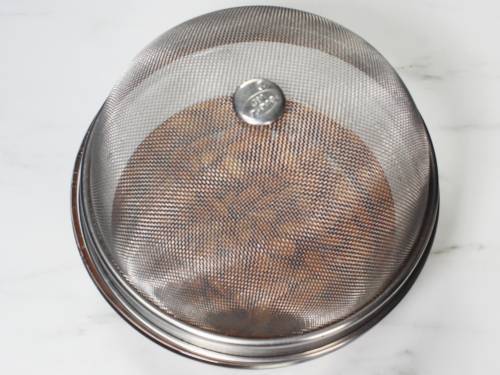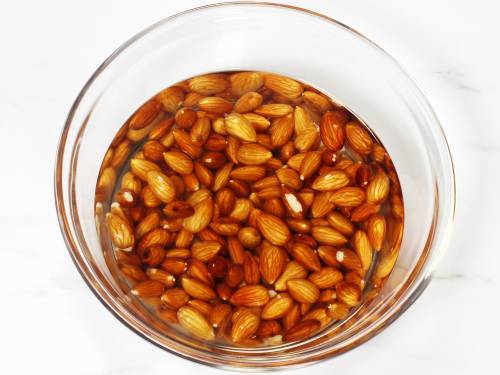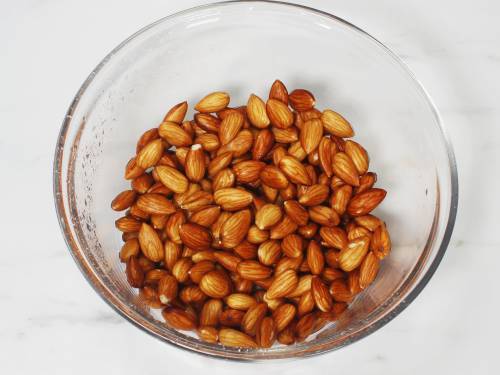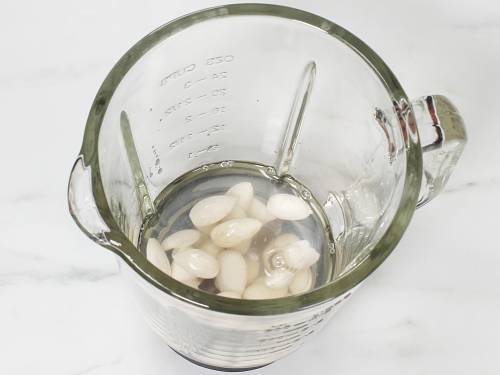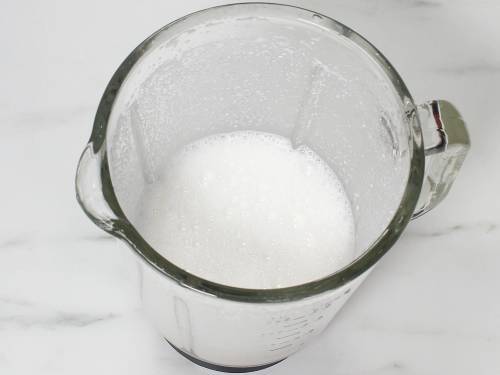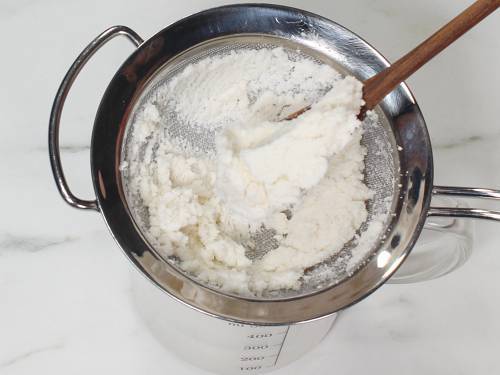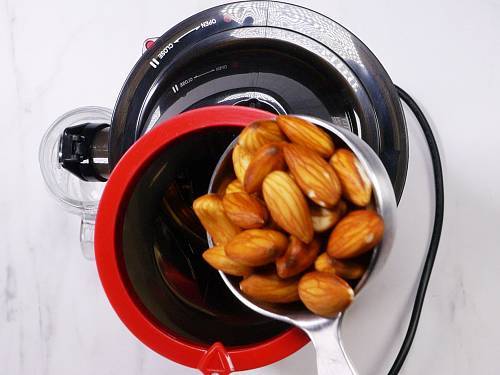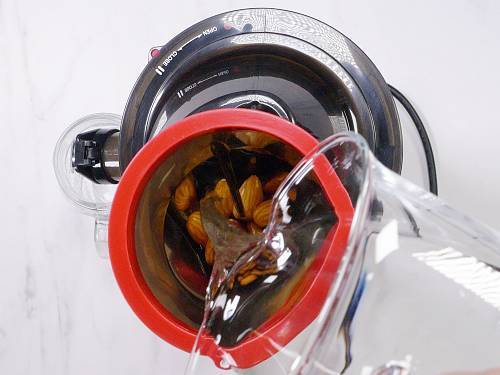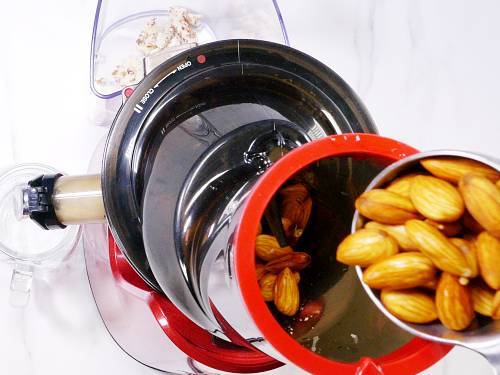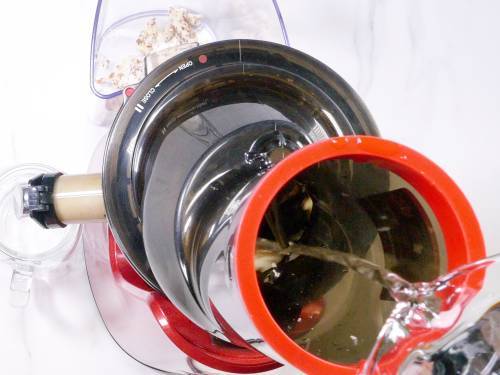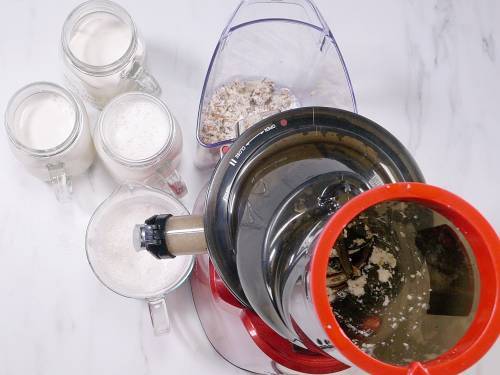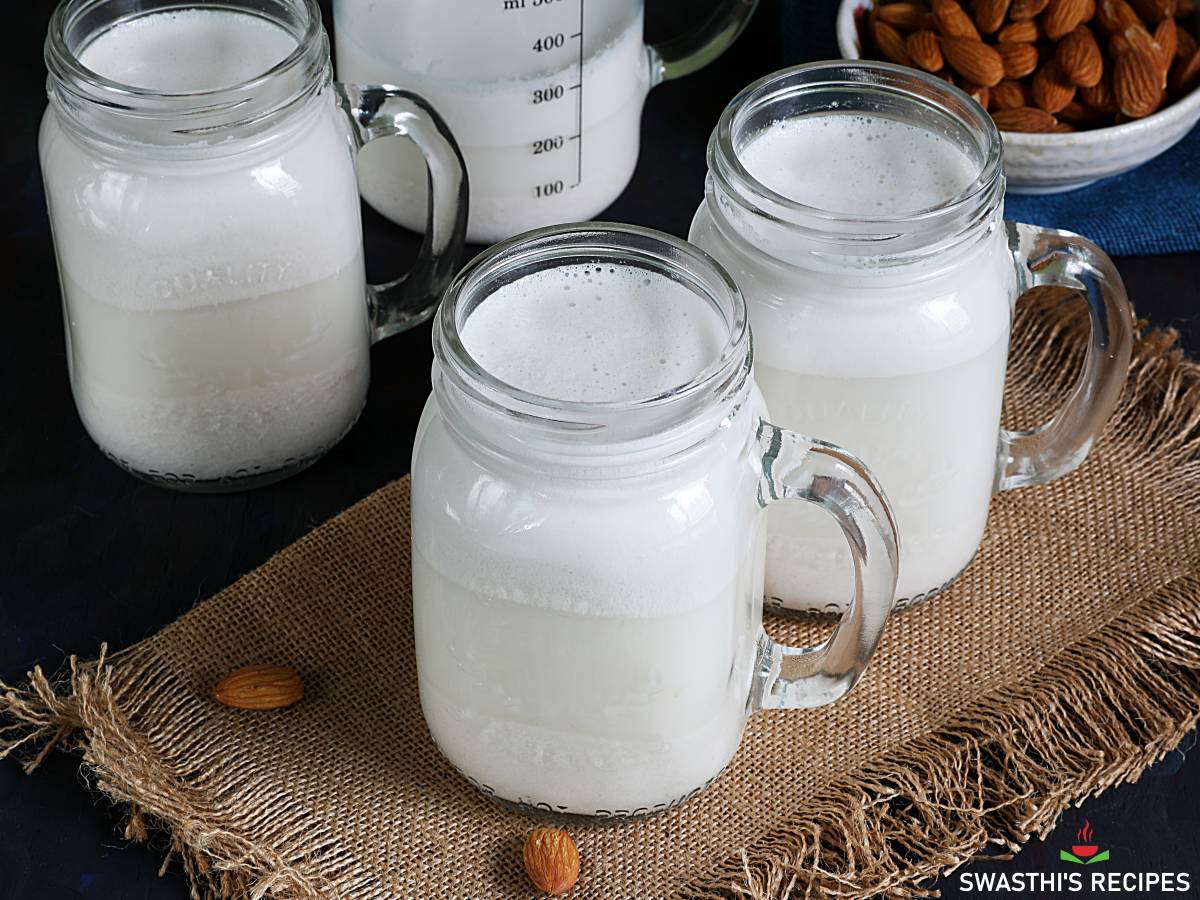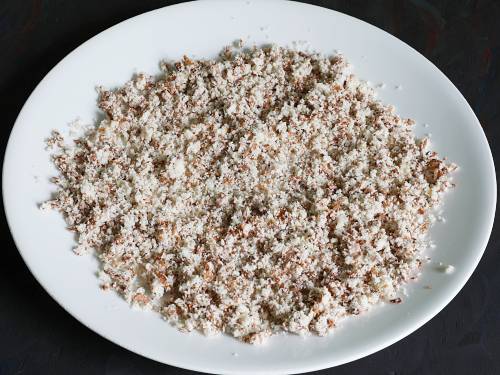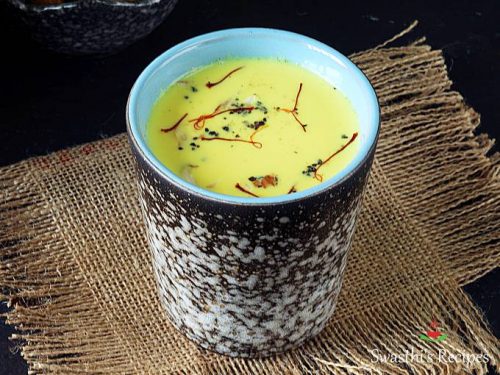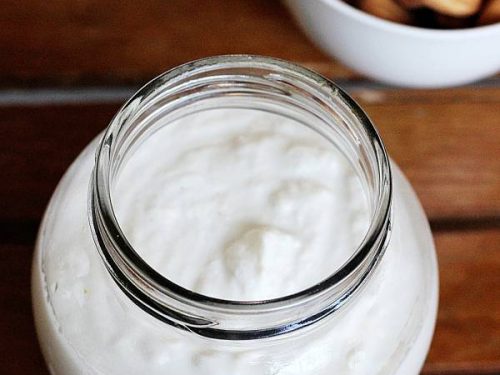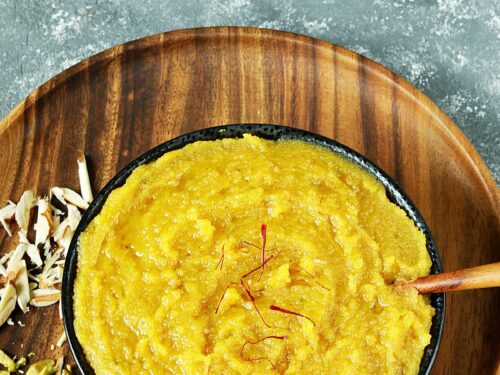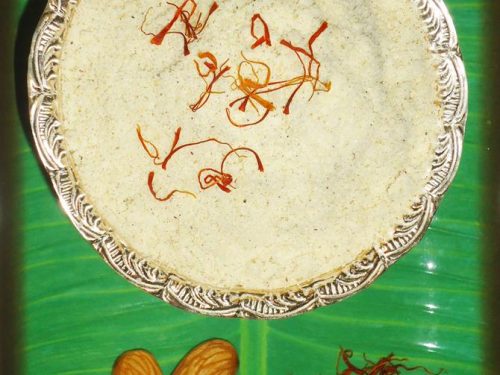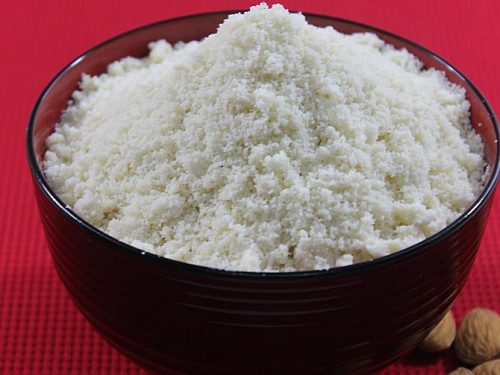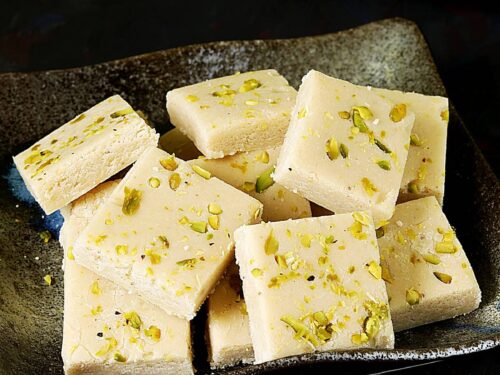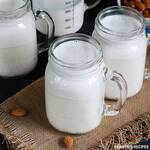In its simplest form, Almond Milk is water and almonds blended together with or without the pulp strained out, leaving behind a milk-like, opaque liquid. This liquid is creamy and similar to dairy milk and is much loved by vegans, lactose-intolerants or those just seeking an alternative to dairy milk.
About Almond Milk
Almond Milk is lactose-free & vegan since it is plant-based and not produced by an animal. A lot of people choose to use plant-based milk for a variety of reasons. Many years ago I was looking for an alternate to homogenized dairy milk for my 1 year old baby. Fortunately he did very well with homemade almond milk. Since then we have been using it on & off. In general, Almond Milk is low in calories, sugar and high in many vitamins and nutrients and contains no cholesterol or saturated fat. Its nutritional profile can vary greatly depending on whether it is homemade or store-bought. Store-bought one is fortified with vitamin A, vitamin B-12, vitamin D & a few other nutrients to closely match the cow’s milk. Though Homemade Almond Milk is not fortified you can still make it nutritious & healthier by not straining the pulp after blending. If you are going to use the almond milk in your cereals, oatmeal, porridge, puddings, soups, curries, shakes and smoothies, simply skip straining it. This way there is zero wastage.
How is Almond Milk Made?
So basically there are 2 ways you can make almond milk at home. One is by straining and the other is without straining. In this post I have shared 2 ways using a blender and using a cold press juicer. Almond milk is made by simply blending soaked almonds with water either in a blender, nut milk maker or slow juicer (cold press juicer). The pureed mixture is wholesome almond milk. Based on the personal preference, pulp can be separated. Almond milk can be sweetened with honey, agave, dates or other sweeteners to mimic the natural sweetness in dairy milk. It can also be processed with cocoa powder, berries or other fruit to create a flavored drink. You can also blend in some cashews to increase the creaminess.
How to make Almond Milk (Stepwise photos)
Preparation
- Add almonds to a large bowl and rinse them well at least thrice.Drain the water and pour fresh drinking water and soak them for 6 hours.
- Avoid covering the bowl unless you keep them in the fridge. Air circulation keeps the almonds fresh while soaking. I use a mesh food cover.
- During soaking time they absorb lot of water and swell up.
- After 6 hours drain the water completely and rinse them a few times again with clean water.
Make in Blender (single serving)
- Add the nuts to a blender jar. You can peel the almonds if you prefer not to strain the pulp. It is up to you but I prefer to peel them if we intend to consume the pulp. This was another time I made a single serving. I have added only 1 ounce of almonds here, 30 grams/ 23 to 24 almonds to make 1 serving. Pour 1/3 cup water and blend as smooth as possible.
- Avoid adding a lot of water at one time as this won’t blend the nuts well unless you use a high speed blender. So add 220 ml in 2 to 3 batches & blend until as smooth as possible.
- Transfer to the serving cup right away or pour it over your cereals. You can also add to your porridge or oatmeal. Do not add almond milk to hot porridge. Let it cool down and then pour the milk. The other ways of consuming this is to just add your favorite fruit like banana, mango, strawberries, blueberries etc to your blender and blend to a smoothie. Adjust the amount of water depending on the fruit you use.
- However if you prefer to strain it you can pass the milk through a nut milk bag or a fine double mess strainer. Run a wooden spoon to press down the pulp against the strainer.
Make in Cold Press Juicer
Making 4 or more servings of almond milk is easier in a cold press juicer or nut milk maker since it needs no straining. Almond milk made in cold press juicer is much creamier and flavorful than the milk made in a blender. 9. Start your juicer. Add 1/3 cup of nuts & 1/3 cup water to the chute. 10. Then add another 1/3 cup nuts and pour 1/3 cup water. 11. Repeat this until you finish all of the nuts and 3 cups water. So for 1 cup almonds you will use 3 to 4 cups water depending on how you prefer. 1 cup of raw almonds will come up to 1¾ cups after soaking. 12. Towards the end I add back all of the pulp to the chute and then pour ¾ to 1 cup water. 13. Fill the almond milk straight away to the pitcher and then to the serving cups. Add your favorite sweetener and serve it right away. Similar recipesBadam milkAlmond yogurtAlmond halwa
Pro Tips
Ensure you rinse the almonds well before & after soaking. This makes a lot of difference to the flavor, color and shelf life of the almond milk. For best health benefits, blend the nuts and consume almond milk as early as possible instead of storing it for later. Use a nut milk maker or a high speed blender if you don’t want to strain the pulp. Regular blenders cannot puree almonds to smooth milk. Almond milk that is not strained is not good to heat or even to stir in coffee and tea. The pulp separates as soon as the milk becomes slightly hot. Unfiltered almond milk is great only for cereals, smoothies, soups, curries and shakes. The strained pulp is almost tasteless but still is edible so it can be used in curries and soups as a thickener.
Easier steps
Soaked almonds keep well in the refrigerator for 3 to 4 days. You can soak them once in 3 to 4 days and make fresh milk every day. If you want to make more than 2 servings of almond milk, peeling the skin is not practically possible every day. If you still want to peel the skin, an easier way is to freeze the nuts and add them to warm water. Within 20 to 30 minutes the skin will loosen on its own. Remove them.
How to use Almond Milk
The easiest way to incorporate almond milk into your daily routine is to include it in your breakfast. Serve it plain as a drink or pour it into your cereals, porridge or soups. A large majority of people use it in their coffee and tea as well. Another great place to incorporate almond milk is in your morning smoothie. Simply blend the almonds with water first to make the milk, then add your favorite fruits and blend.
Using pulp
If you decide to strain the pulp after making almond milk, you can refrigerate or freeze it and use in a lot of ways. It can also be dehydrated and stored for further use. But If you are making a lot of almond milk regularly then dehydrating so much of the pulp is not really practical. So you can add it to curries, chutneys, soups or stir fry veggies. If you bake often you can add it to a batch of cookies. You can also make crackers, granola or energy bites! Related Recipes
Recipe Card
This recipe was first published in January 2013. Updated & republished in November 2022.
